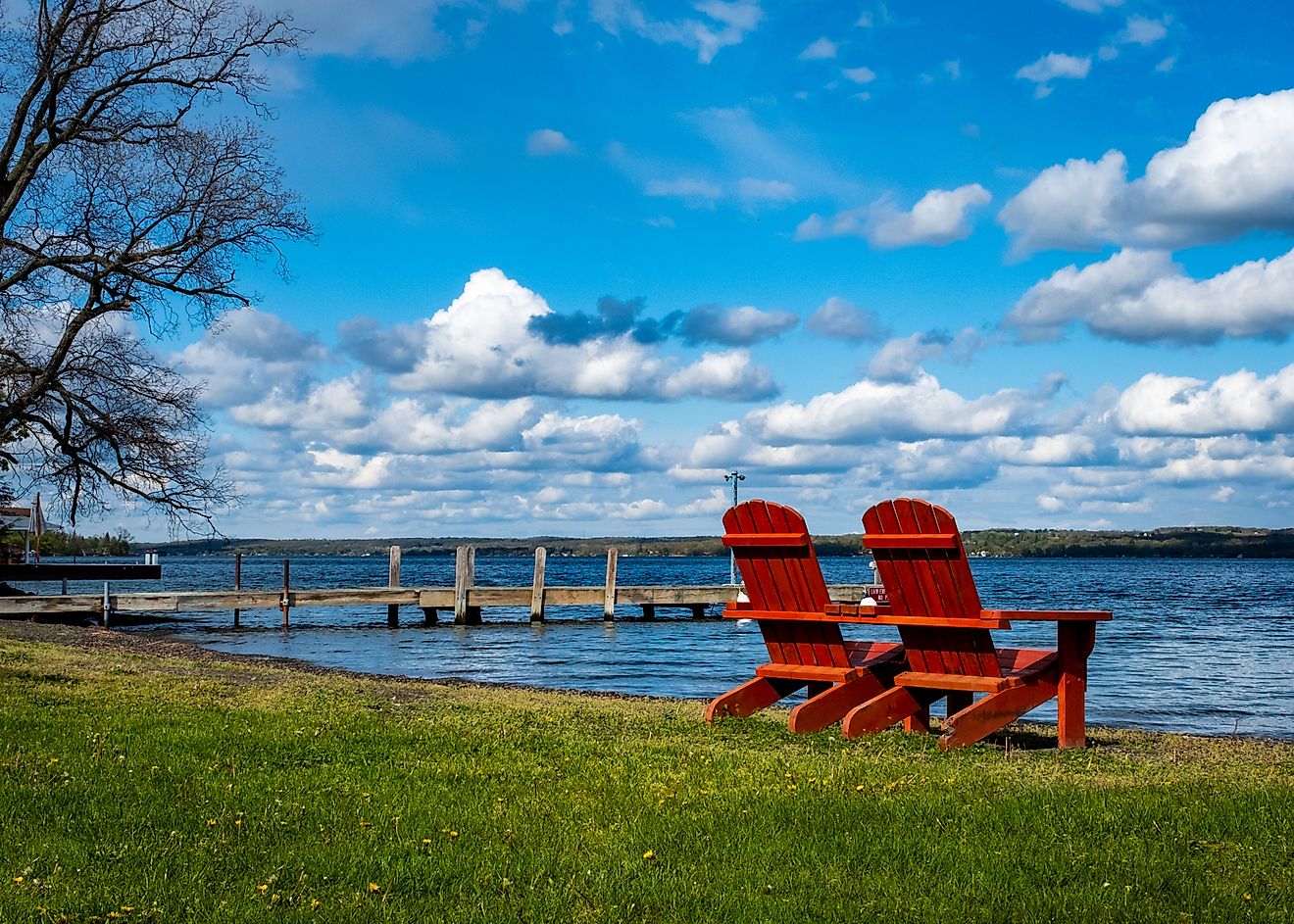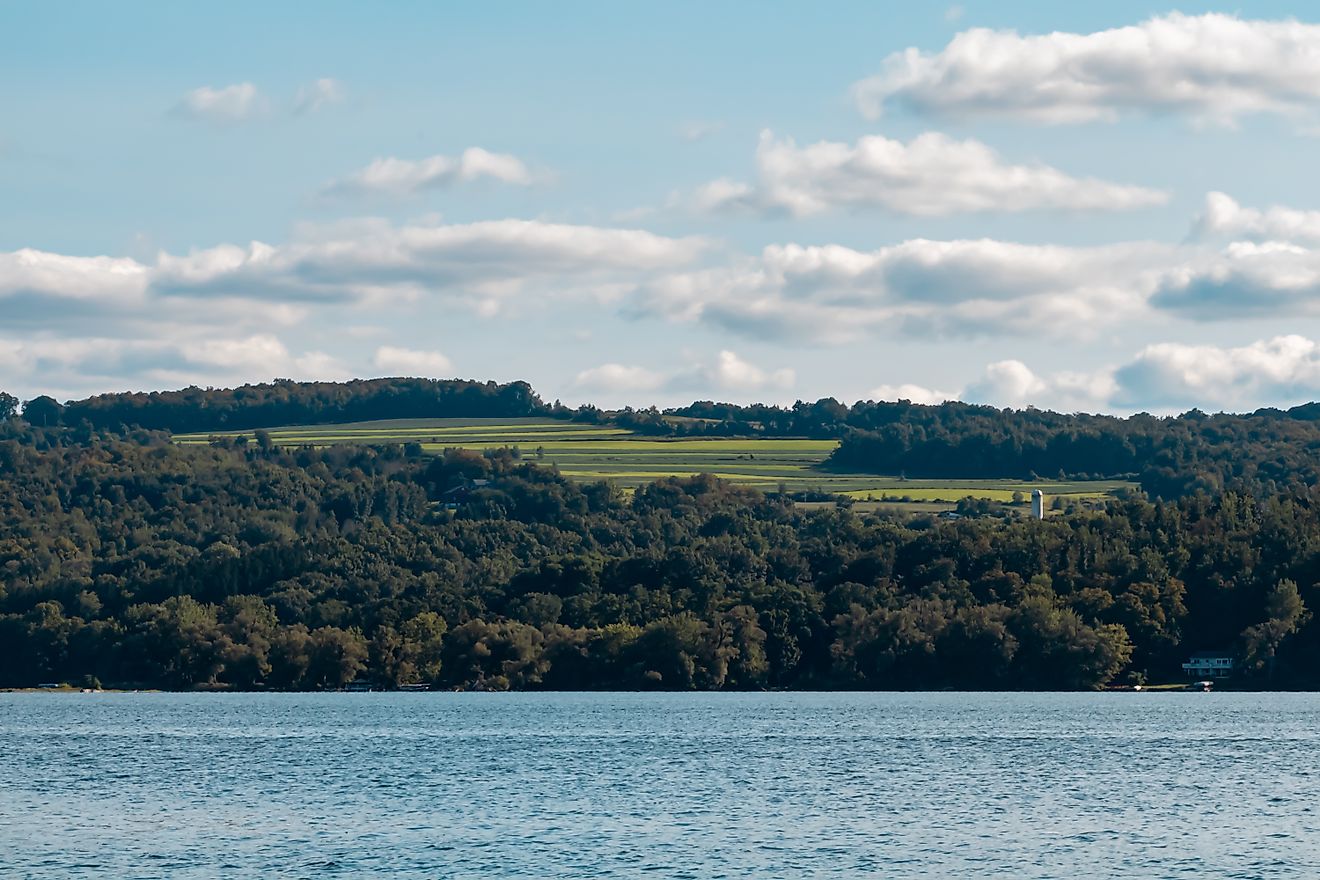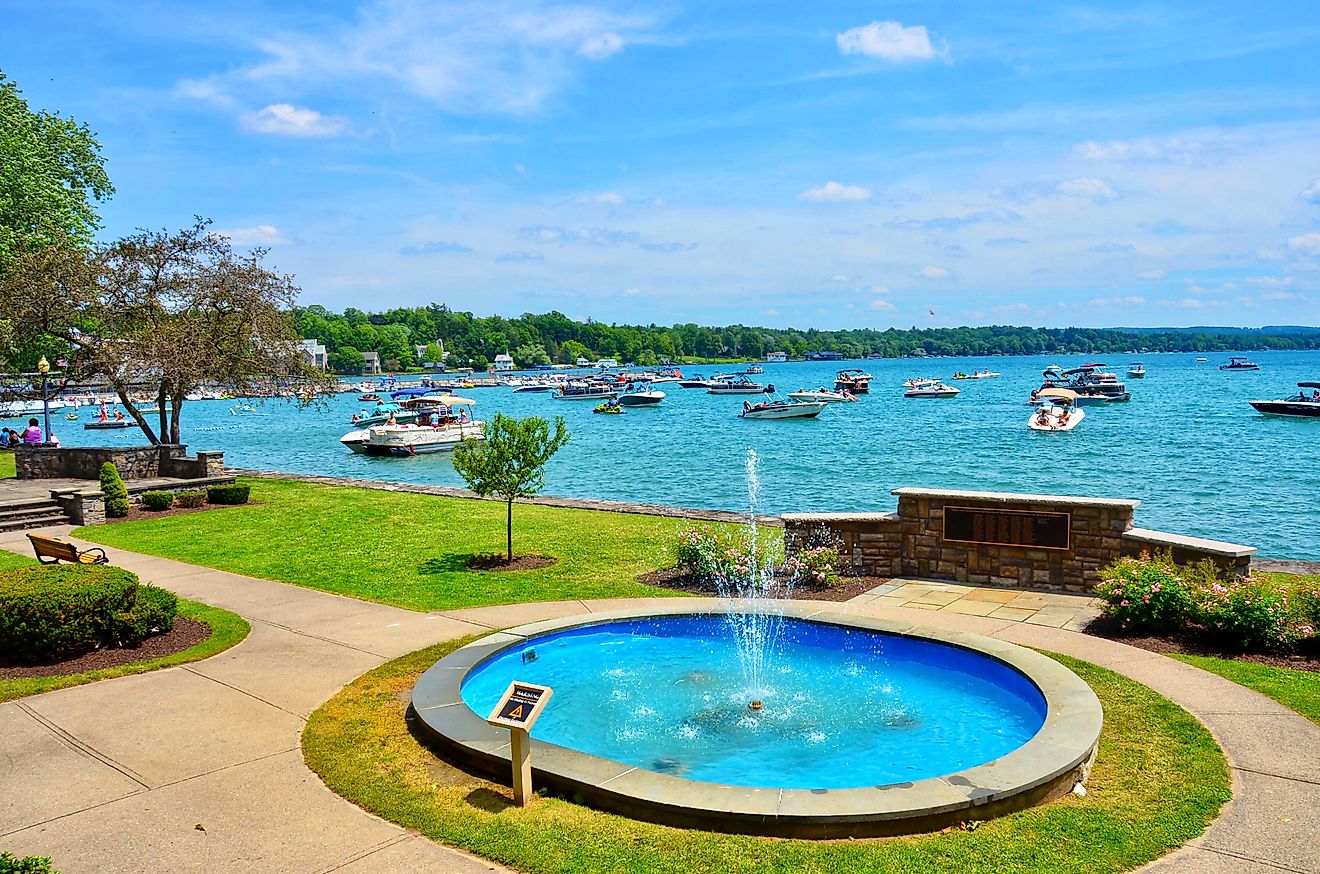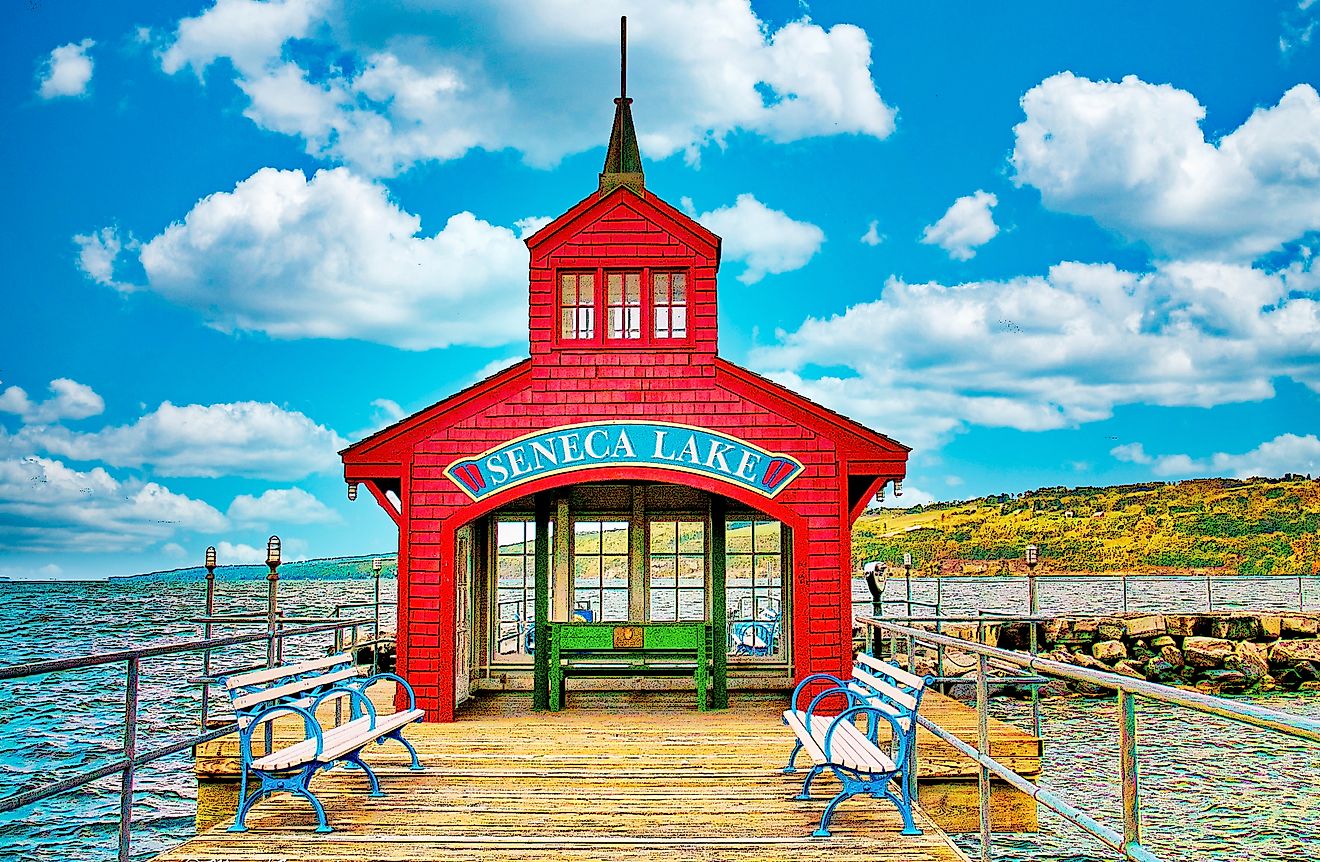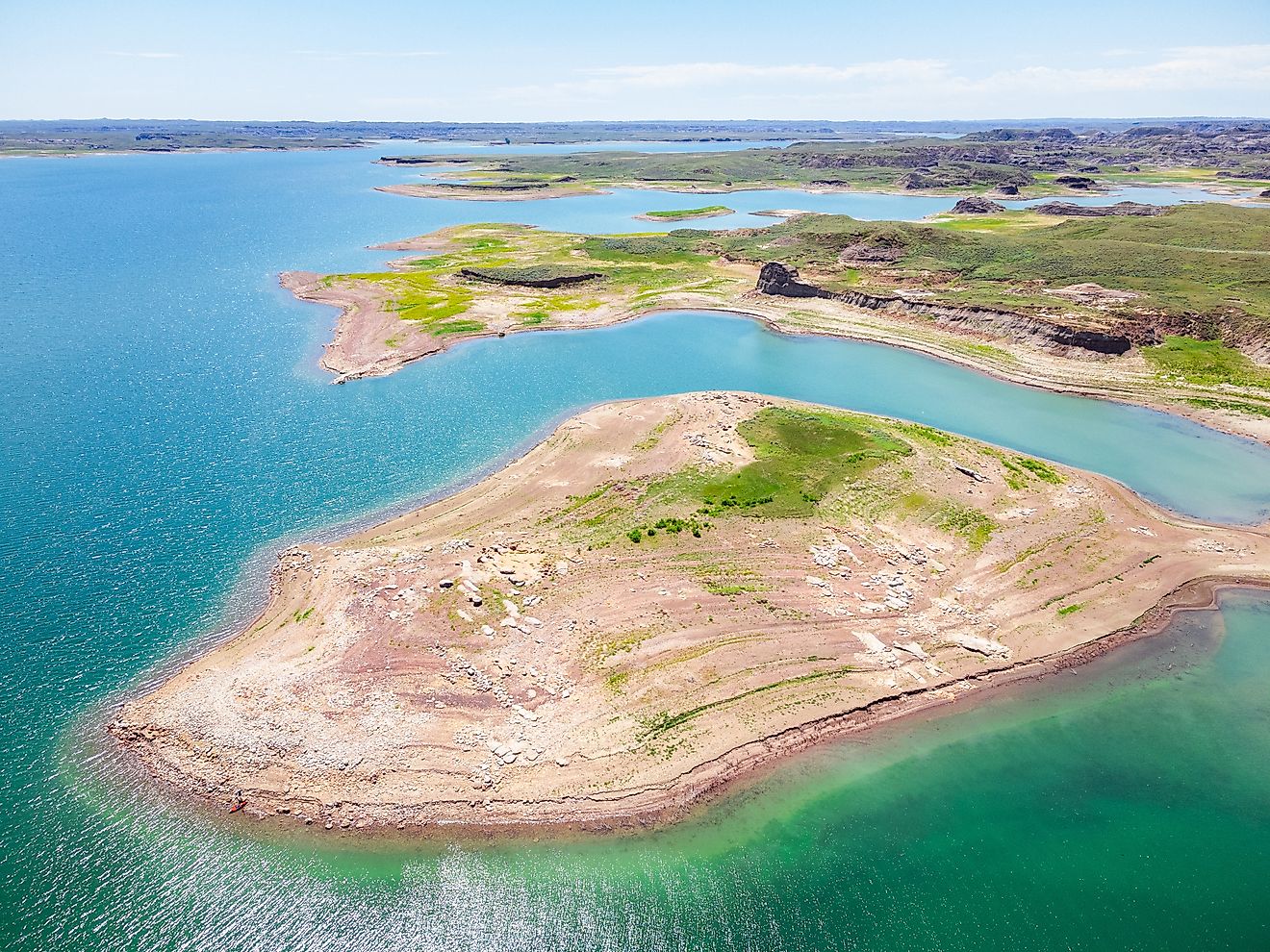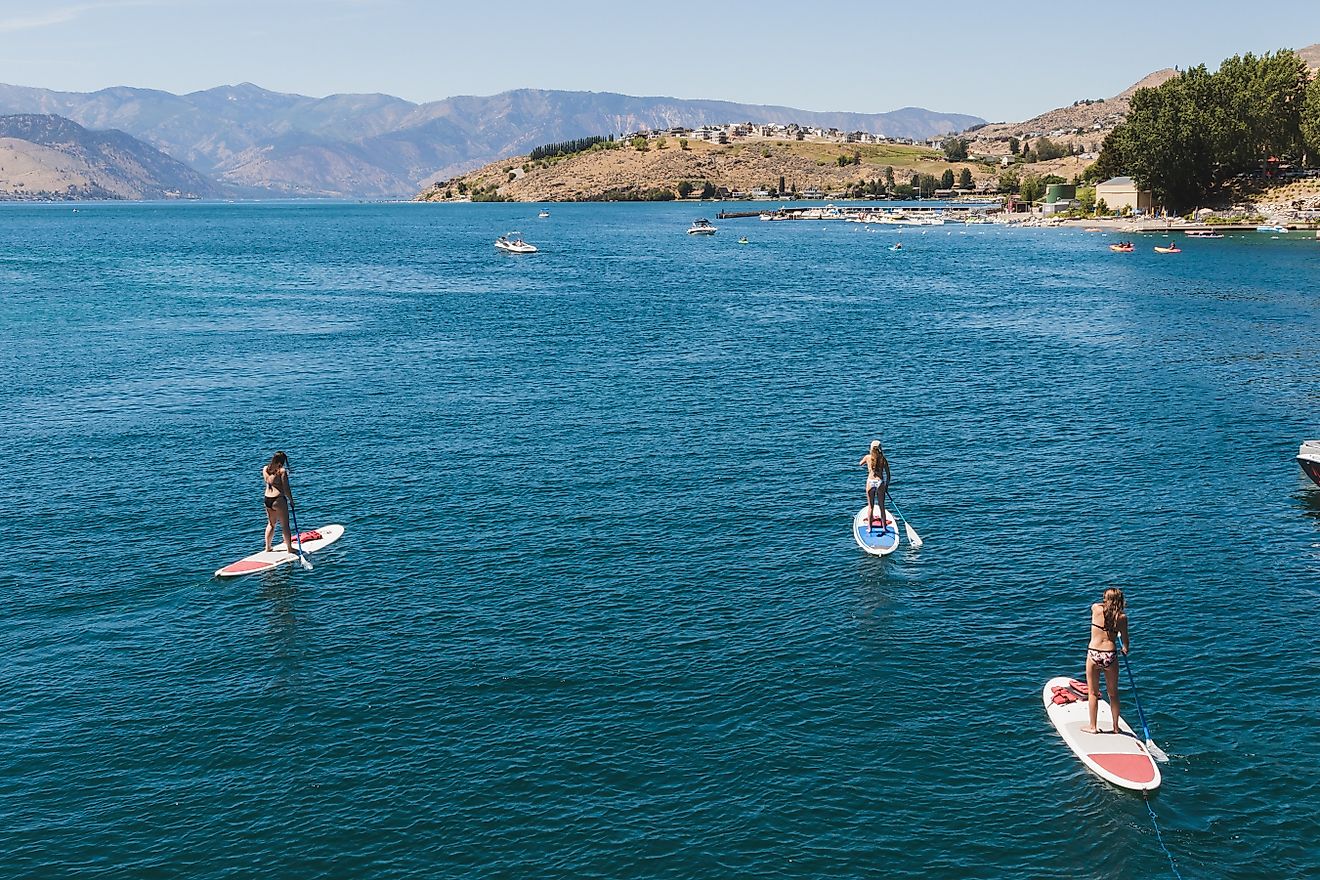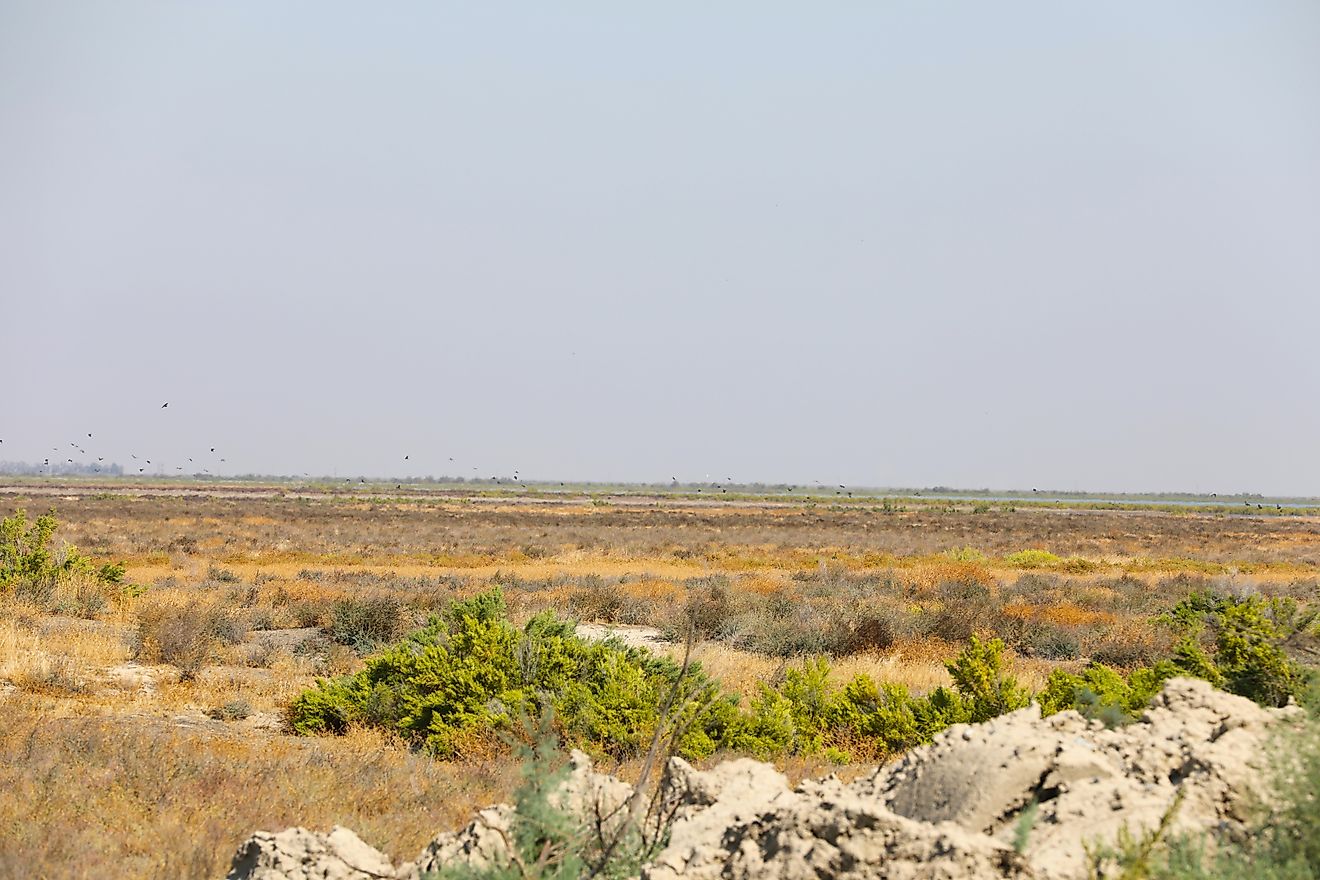
Cayuga Lake
Cayuga Lake is one of the most iconic bodies of water in New York’s Finger Lakes region. Stretching 38 miles from the college town of Ithaca in the south to the rural communities near Springport in the north, it’s the second-largest of the Finger Lakes and one of the deepest, plunging to 435 feet.
Surrounded by rolling hills, historic towns, and world-renowned vineyards, the lake has become a year-round destination for boating, hiking, and scenic drives. But it’s also a vital part of the region’s ecology and economy—serving as a hub for fisheries research, wildlife habitat, and outdoor recreation.
Physical Characteristics

Cayuga Lake covers an impressive 42,956 acres and sits at an elevation of 381 feet. Its long, narrow profile gives it a shoreline of over 100 miles, winding through Tompkins, Cayuga, and Seneca counties. The lake is 3.5 miles at its widest point, with a mean depth of 181 feet and a thermocline that typically settles around 70 feet in summer.
The northern end of the lake is relatively shallow and weedy, covering about 5,800 acres. This area transitions into the lake's deeper basin, which dominates most of its length and supports a unique coldwater ecosystem. Along its shores lie charming towns such as Ithaca, Lansing, Union Springs, Aurora, and Seneca Falls.
Aquatic Vegetation and Invasive Species
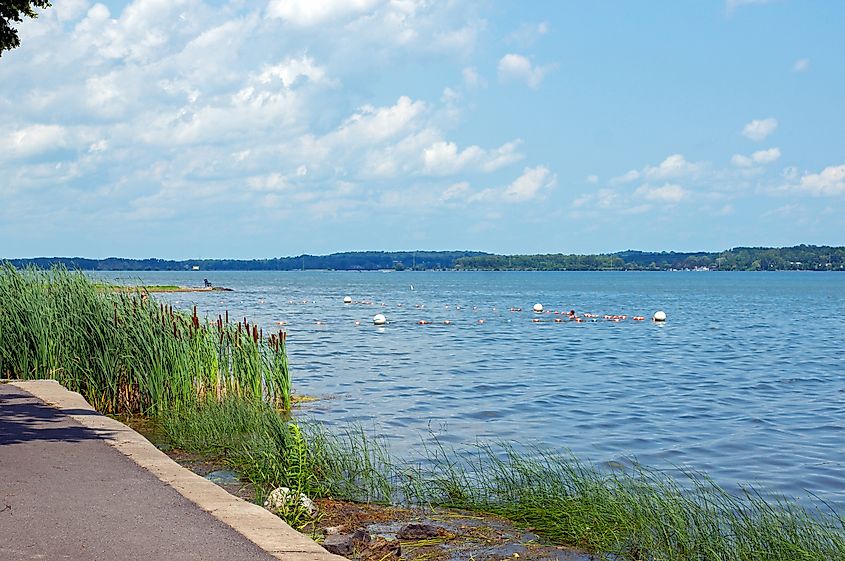
Aquatic vegetation thrives at both ends of Cayuga Lake, particularly in the shallow northern section where dense weed beds provide essential habitat for fish. A narrow band of aquatic plants also follows the shoreline.
In recent years, Hydrilla—an aggressive invasive species—has become a concern, first identified in Cayuga Inlet in 2011. Since then, local and state agencies have implemented strict monitoring and mitigation efforts. Boaters are urged to follow best practices to avoid unintentionally spreading this plant to other waterbodies.
Fishing on Cayuga Lake
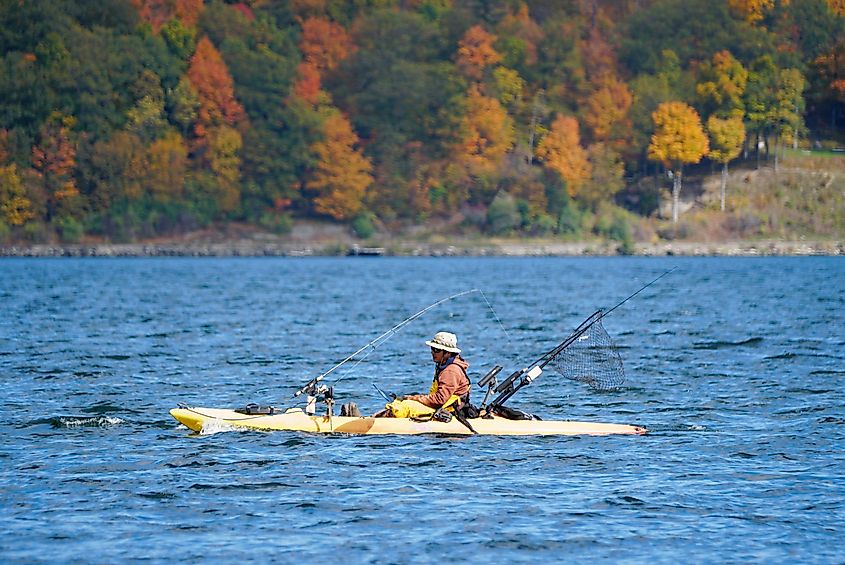
Cayuga Lake is a favorite among anglers for its wide variety of species and reliable year-round action. The northern end of the lake is shallower and filled with aquatic vegetation, making it ideal for warmwater fishing. Largemouth bass, chain pickerel, northern pike, and panfish are commonly found here, and this section of the lake has hosted multiple professional bass tournaments.
Farther south, Cayuga deepens dramatically and supports a coldwater fishery with lake trout, brown trout, rainbow trout, and landlocked Atlantic salmon. The New York State DEC stocks the lake annually with tens of thousands of trout and salmon to maintain healthy populations. Tributaries like Fall Creek and Cayuga Inlet also offer excellent seasonal runs, particularly in spring and fall.
Ice fishing in the northern shallows is popular for panfish and pickerel when conditions permit. Shore fishing near Milliken Station during winter can also yield trout and salmon. For current conditions, anglers can check the Central New York Fishing Hotline.
Ongoing fisheries management includes egg collection for hatcheries, sea lamprey control through physical barriers, and an angler diary program that tracks population trends and fishing success rates.
Public Access and Boat Launches

Cayuga Lake is exceptionally accessible, with public boat launches spread across all three counties that touch the shoreline. In Tompkins County, some of the most popular access points include:
-
Allan H. Treman State Marina (Ithaca): Concrete ramp, pumpout, and parking for 141 trailers.
-
Taughannock Falls State Park (north of Ithaca): Concrete ramp, pumpout, parking for 16 trailers.
-
Myers Point Park (Lansing): Shore and boat access.
-
Stewart Park (Ithaca): Shore fishing only.
In Cayuga County, boaters can launch from:
-
Long Point State Park (near Aurora): Hard surface ramp for 35 cars.
-
Mud Lock (north of the village of Cayuga): Concrete ramp for 16 trailers.
-
Frontenac Park (Union Springs): Local access point with community facilities.
In Seneca County, key launches include:
-
Cayuga Lake State Park (Seneca Falls): Concrete ramp, pumpout, 50 trailers.
-
Dean's Cove State Marine Park (north of Ithaca): Two concrete ramps and space for 48 trailers.
Accessible recreation is available at select launch sites, particularly from River Road near Mud Lock, which features ADA-compliant boat docks and viewing areas.
Ecology and Conservation

Cayuga Lake plays a vital ecological role in New York State. Beyond its status as a fishery, it serves as a water source, migratory bird stopover, and educational resource for local institutions like Cornell University. Its relatively long and deep profile, combined with the inflow from tributaries, helps maintain a complex aquatic ecosystem.
Management efforts target invasive species, maintain fish populations, and support habitat restoration projects. Ongoing monitoring, including water quality assessments and species counts, ensures that Cayuga Lake remains both a recreational treasure and a biological stronghold.
Nearby Attractions

Cayuga Lake is at the heart of the Cayuga Lake Wine Trail, the oldest such trail in the country. The vineyards and wineries along Route 89 are a major draw for visitors, offering tastings, local food pairings, and scenic views.
Outdoor enthusiasts can explore Taughannock Falls State Park, home to one of the tallest waterfalls east of the Rockies. In Ithaca, visitors will find gorges, hiking trails, and a vibrant downtown filled with cafes, bookstores, and live music. Museums, farmers markets, and seasonal festivals round out the area’s appeal.
